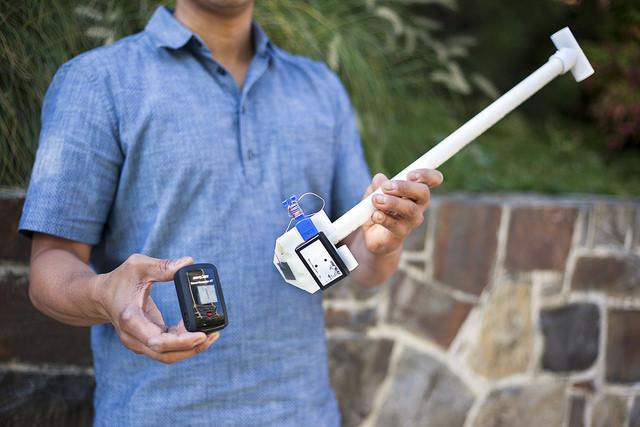
Credit: Courtesy of Institute for Sustainable Solutions
Portland experiences both extreme heat in the summer months and frequent nuisance flooding in the winter and spring, and that’s only expected to worsen with climate change. A new Portland State University study found the potential for flooding and extreme heat is most acute in East Portland’s low-income neighborhoods that have fewer green spaces and larger concentrations of less-educated residents.
The PSU research team — geography graduate students Benjamin Fahy and Emma Brenneman, geography professor Heejun Chang and urban studies and planning professor Vivek Shandas — mapped winter flood and summer heat hazard potential, then tested it against sociodemographic and physical variables at a neighborhood scale, including income, level of education, population density, green space and the amount of impervious surface area. This study focused on nuisance flooding, the kind of flooding that shuts down roads, overwhelms storm drains and seeps into basements.
Their findings were published in the journal International Journal of Disaster Risk Reduction.
“Not surprisingly, those poorer, low-lying areas on the eastside along Highway 205 are disproportionately exposed to floods and urban heat islands,” said Heejun Chang, a geography professor in PSU’s College of Liberal Arts and Sciences and director of the WISE research group or Water as an Integrated System and Environment. “Those are the potential target areas where the city needs to pay attention to.”
Among the findings:
- High-flood potential areas are located consistently in East Portland along Highway 205, while most low-flood potential areas are found in NW and SW Portland and near the NE-SE Portland transition along I-84.
- Most areas with high-heat hazards are clustered in East Portland, as well as North Portland and along major roadways, while low-heat hazard clustering is found in the western hills, central NE and SE Portland.
- The areas with the greatest combined hazard potential (both extreme heat and flooding) were clustered in East Portland, SE Portland and North Portland. Conversely, the city’s western hills and central NE and SW neighborhoods – wealthier neighborhoods – showed the lowest risk.
The methods used by the team are meant to be replicated by any researcher, practitioner or policy maker interested in identifying which regions of their cities are most at risk and what demographic factors characterize the most vulnerable citizens.
Chang said planting trees is an easy and effective action to ease both urban heat and flooding.
“If you can better manage land, you can better manage water in the urban areas,” he said. “During the summer, trees can provide shading and reduce the heat island effect. But during winter, they can intercept the rainwater, hold water in the soils longer, and release water gradually.”
Chang said that in some areas where impervious surface areas are too high, green roofs might be a better alternative. He and his students are continuing to look at ways to expand green infrastructure to reduce heat and nuisance flooding potentials. Shandas has worked with Portland city officials to develop an online mapping tool to identify specific locations where expanding tree canopy can improve social and environmental conditions.
Chang said cities also need to better educate the public, as the places likely to experience the most severe impacts of nuisance flooding and extreme heat often lack access to information and the ability to prepare for hazards.
###
The PSU study is part of the larger National Science Foundation-funded Urban Resilience to the Extremes Sustainability Research Network, a project working to analyze the impacts of climate change on 10 cities in North and South America; identify risks and vulnerabilities associated with extreme weather events; and produce scenarios, transitions and plans for resilient urban infrastructure and systems. The other cities are Baltimore, Maryland; Hermosillo, Mexico; Mexico City, Mexico; Miami, Florida; New York, New York; Phoenix, Arizona; San Juan, Puerto Rico; Syracuse, New York; and Valdivia, Chile.
The study was also supported by PSU’s Institute for Sustainable Solutions. Shandas is research director of ISS, and Chang is a faculty fellow.
Media Contact
Heejun Chang
[email protected]
Original Source
https:/
Related Journal Article
http://dx.




